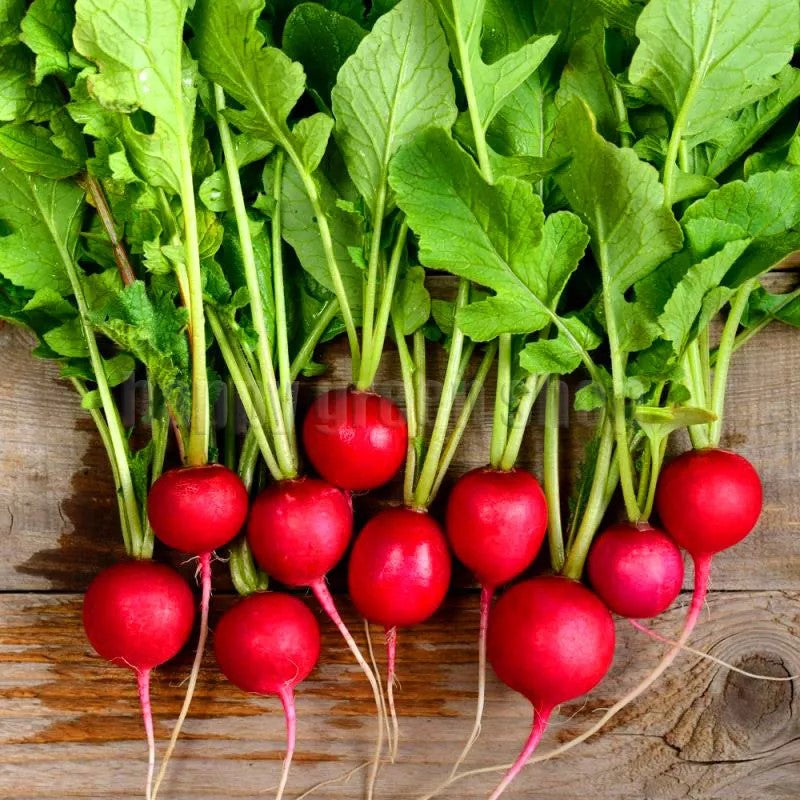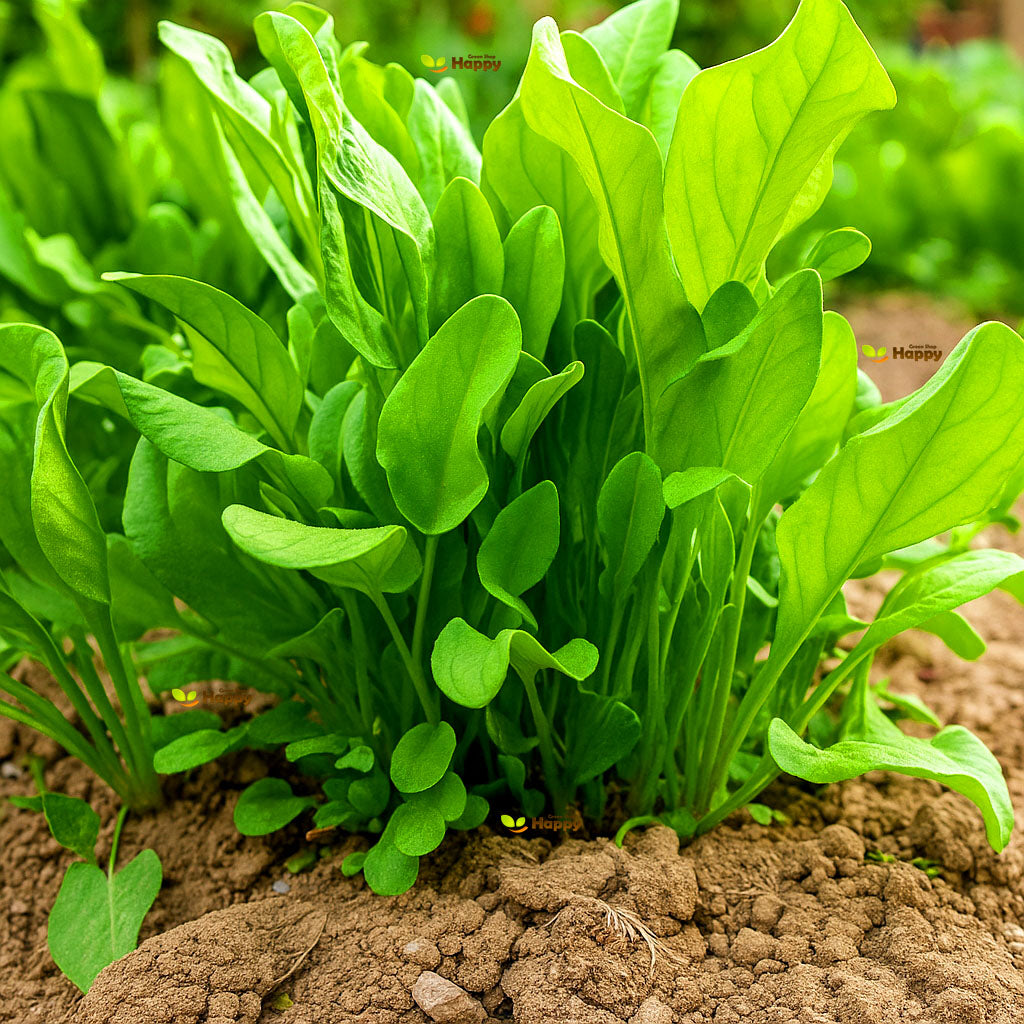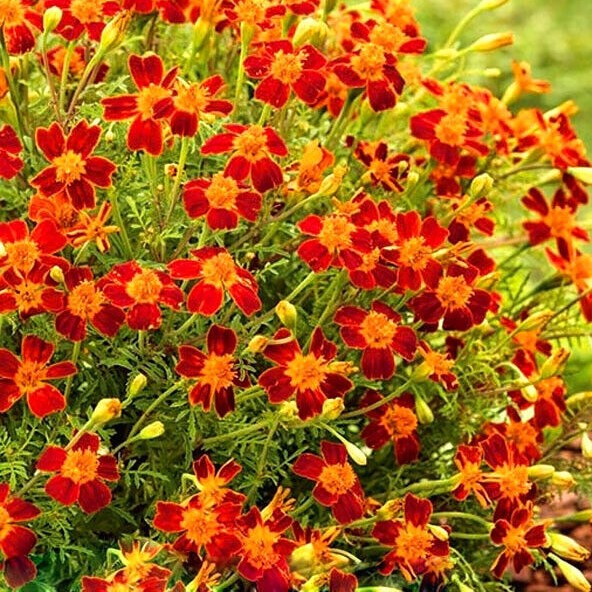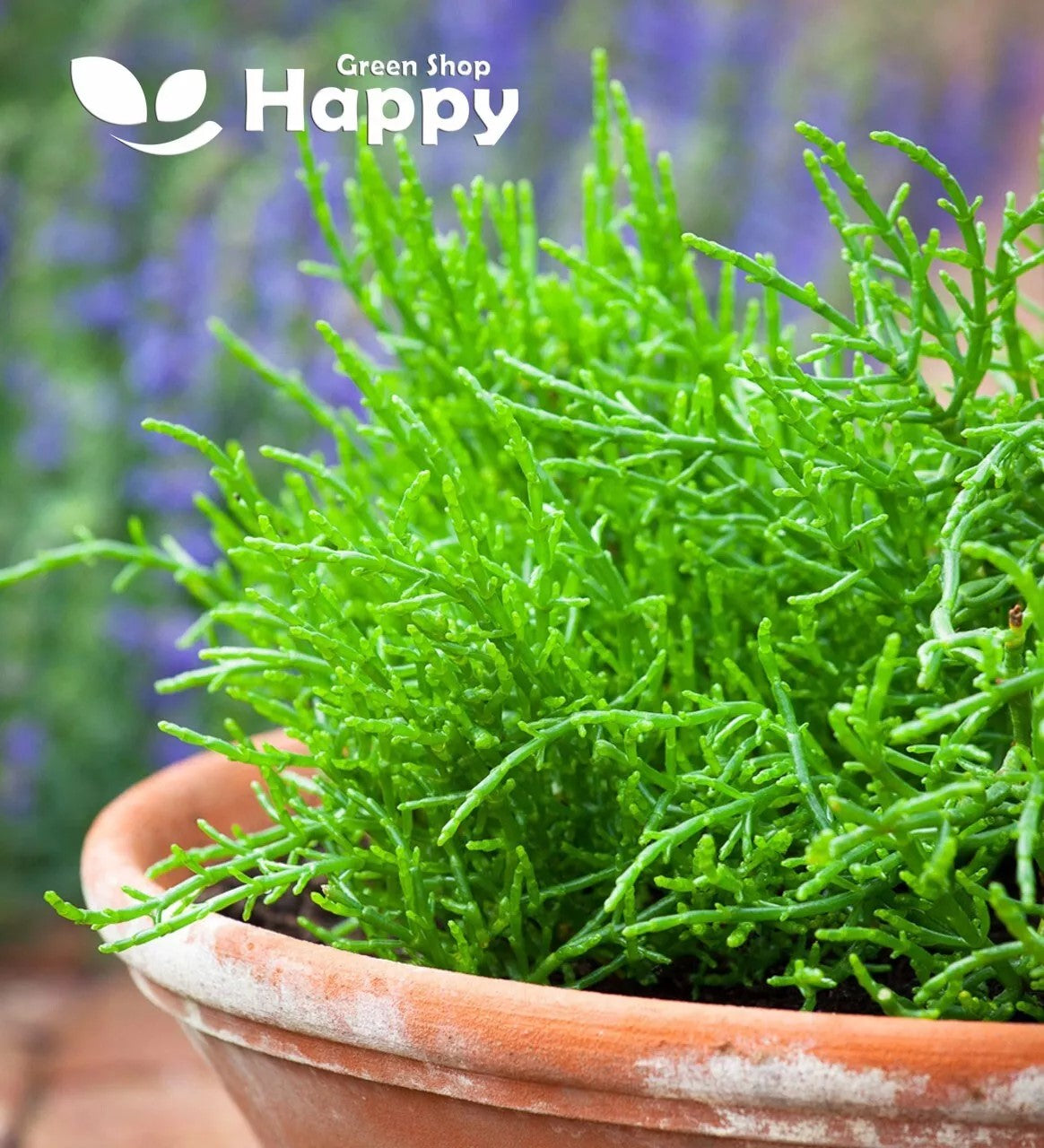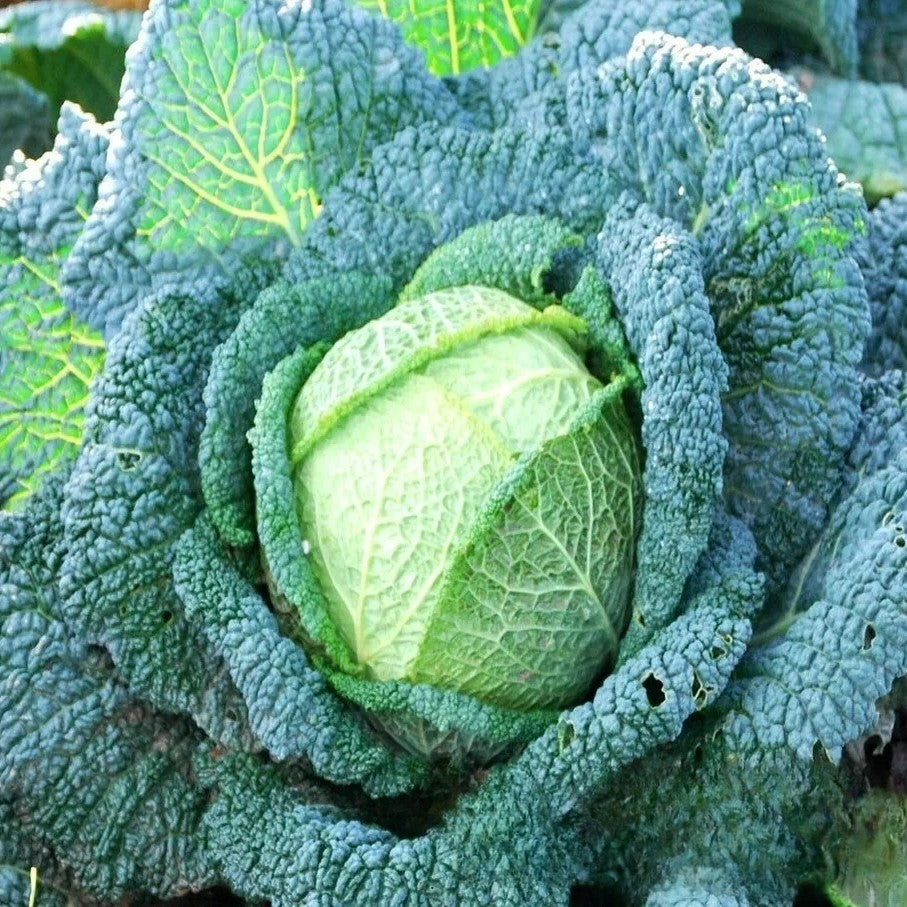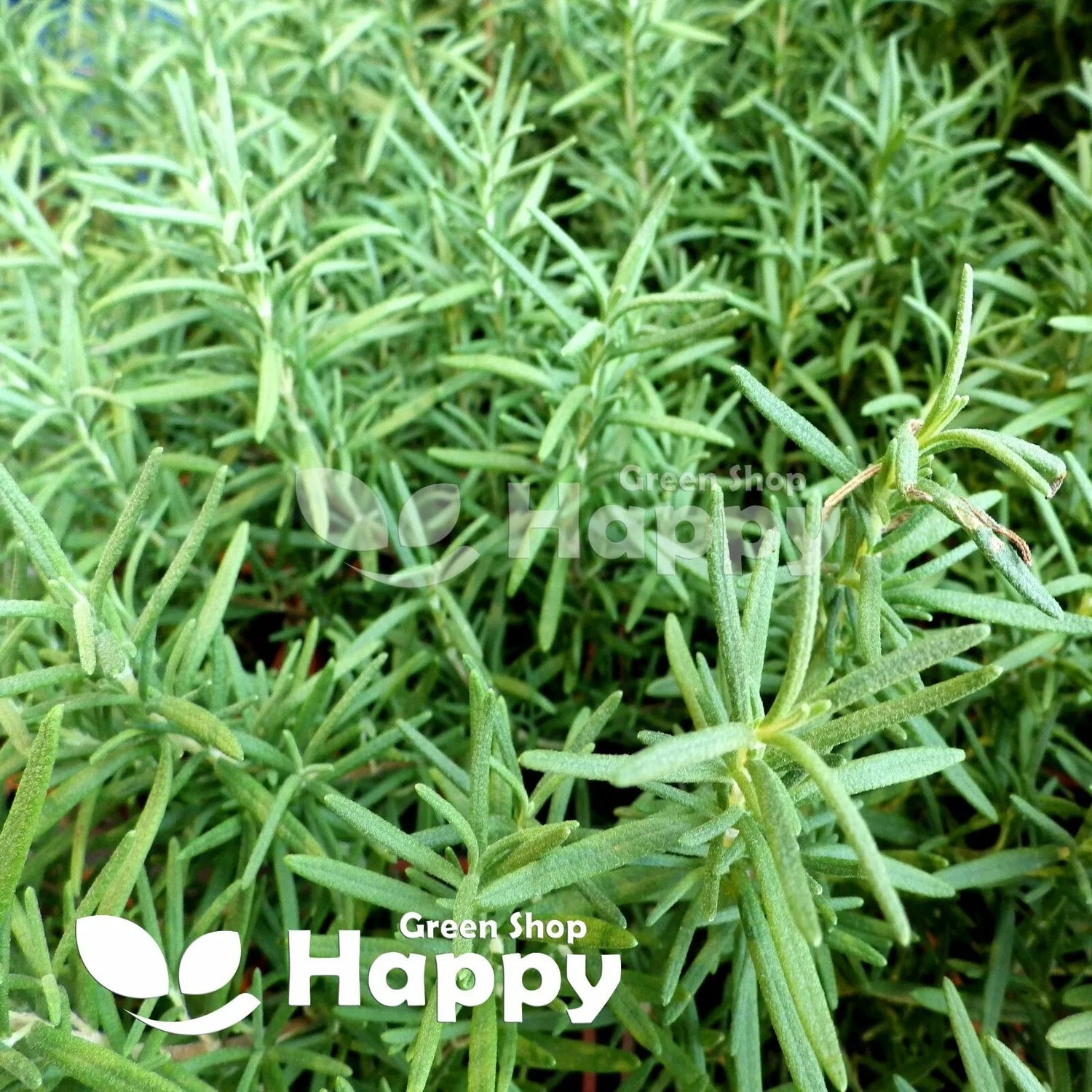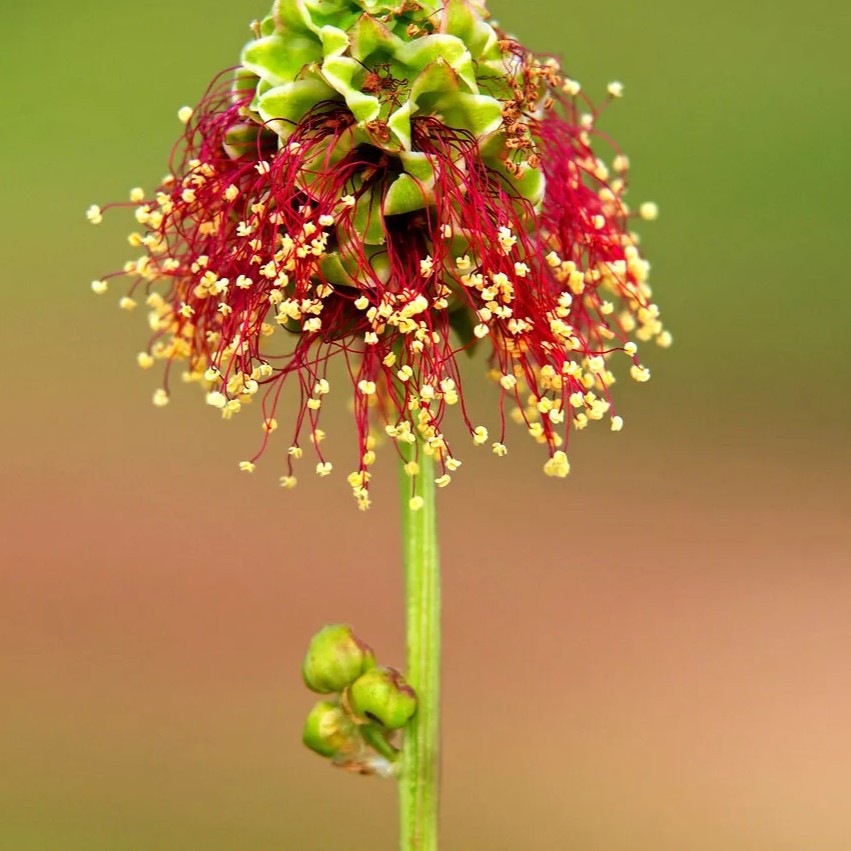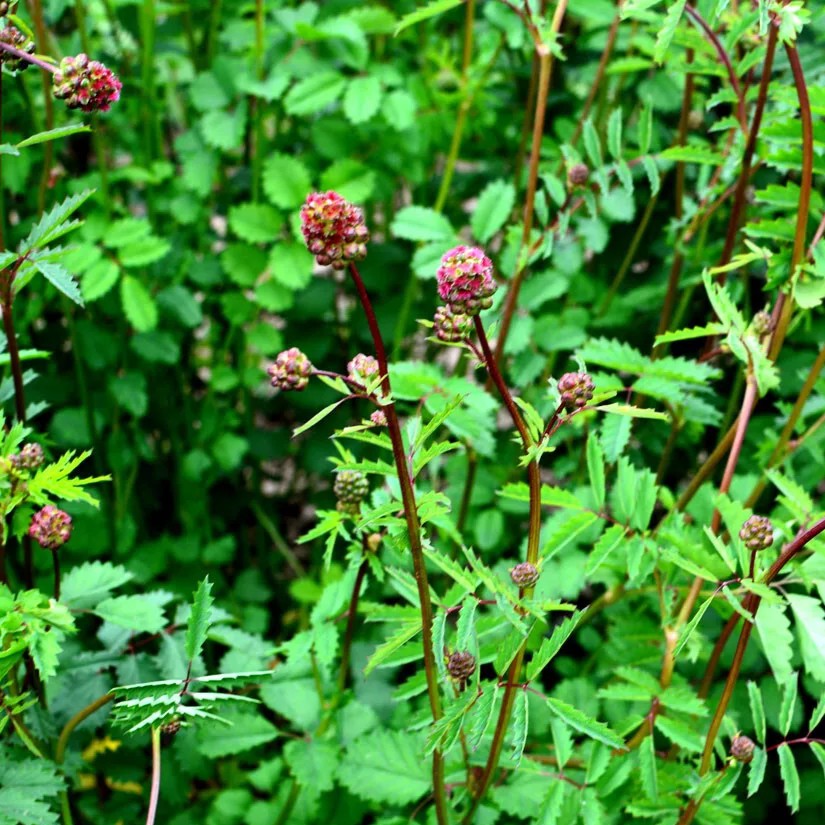Sort by:
225 products
225 products
Sorrel 'Blonde de Lyon' Seeds (Rumex acetosa)
Brighten up your kitchen garden with Sorrel 'Blonde de Lyon', a traditional French variety producing tender, pale green leaves with a tangy, lemony flavor. Perfect for soups, sauces, salads, and omelets, this perennial herb grows quickly and provides harvests over a long season. Its sharp, refreshing taste makes it a gourmet favorite in classic French cuisine.
How to Grow
-
Sow indoors in early spring or directly outdoors once soil warms.
-
Prefers fertile, moist, well-drained soil in full sun or partial shade.
-
Sow 0.5–1 cm deep in rows 30–40 cm apart.
-
Thin seedlings to 20–25 cm apart for strong growth.
-
Harvest young leaves regularly to encourage new growth.
Key Features
-
French heirloom sorrel with pale green, tender leaves
-
Distinct lemony flavor, perfect for culinary use
-
Perennial, reliable harvest year after year
-
Early cropping and fast-growing
-
Excellent for soups, sauces, salads, and garnishes
Ideal For
-
Traditional French cooking
-
Adding zest to salads and omelets
-
Perennial herb gardens
-
Home cooks and gourmet gardeners
Sowing
-
Best time: Spring or early summer
-
Depth: 0.5–1 cm
-
Spacing: Thin to 20–25 cm, rows 30–40 cm apart
-
Prefers moist, fertile soil in sun or partial shade
Quick Tip
-
Cut back flowering stems to prolong leaf production and maintain flavor.
Signet Marigold ‘Red Gem’ – Striking Color, Edible, and Long-Blooming
Signet Marigold ‘Red Gem’ produces a profusion of small, single, deep red blooms with a golden center, set against fine, lacy foliage. With a citrusy fragrance and edible petals, it brings ornamental beauty and culinary value to the garden. Perfect for edging, pots, and companion planting, flowering from summer to frost.
What Makes It Special
-
Rich red blooms with golden centers for vibrant contrast
-
Delicate, aromatic foliage with a citrus scent
-
Edible petals for salads, garnishes, and decoration
-
Long flowering season and easy to maintain
-
Attracts bees, butterflies, and other pollinators
Key Features
-
Height: 20–25 cm – ideal for edging and containers
-
Heat- and drought-tolerant once established
-
Aromatic foliage deters some common pests
-
Great for edible and ornamental planting
-
Beginner-friendly and low-maintenance
Ideal For
-
Edging borders, pathways, and vegetable beds
-
Patio pots, containers, and window boxes
-
Edible gardens for colorful garnishes
-
Companion planting in vegetable plots
Sowing
-
Sow indoors 4–6 weeks before last frost or direct sow after frost danger has passed
-
Plant seeds 0.5 cm deep in well-drained soil at 18–22°C
-
Germination: 7–14 days
-
Space plants 20–25 cm apart
-
Requires full sun for best blooms
Signet Marigold ‘Starfire’ Mixed – Dainty Blooms, Continuous Color
Signet Marigold ‘Starfire’ Mixed produces masses of small, single blooms in a fiery blend of gold, orange, and red on compact, mounded plants. With fine, aromatic foliage and nonstop flowering from summer to frost, they are perfect for edging, pots, and adding cheerful color to any sunny spot.
What Makes It Special
-
Bright mix of gold, orange, and red single blooms
-
Compact, neat growth habit with fern-like foliage
-
Long blooming period from summer to frost
-
Edible petals add color to salads and dishes
-
Low-maintenance and heat-tolerant
Key Features
-
Height: 20–25 cm – great for edging and pots
-
Abundant flowers that attract pollinators
-
Aromatic foliage deters some garden pests
-
Ideal for edible and ornamental planting
-
Easy to grow, even for beginners
Ideal For
-
Edging borders and pathways
-
Patio pots and containers
-
Edible gardens for decorative garnishes
-
Companion planting in vegetable plots
Sowing
-
Sow indoors 4–6 weeks before last frost or direct sow after frost danger has passed
-
Plant seeds 0.5 cm deep in well-drained soil at 18–22°C
-
Germination: 7–14 days
-
Space plants 20–25 cm apart
-
Requires full sun for best flowering
Signet Marigold ‘Orange Gem’ – Bright, Edible, and Long-Blooming
Signet Marigold ‘Orange Gem’ produces masses of vivid orange single blooms above fine, lacy foliage. Flowering from summer to frost, this variety brings cheerful color, a light citrus fragrance, and edible petals to the garden. Ideal for edging, pots, and companion planting.
What Makes It Special
-
Vivid orange blooms that brighten any garden space
-
Delicate, fern-like foliage with a citrus scent
-
Edible petals for garnishes and salads
-
Long, prolific flowering season with minimal care
-
Attracts bees, butterflies, and other pollinators
Key Features
-
Height: 20–25 cm – perfect for edging and containers
-
Heat- and drought-tolerant once established
-
Aromatic foliage deters some pests naturally
-
Great for both ornamental and edible uses
-
Easy to grow, even for beginners
Ideal For
-
Edging borders, pathways, and vegetable plots
-
Patio pots, window boxes, and small planters
-
Edible gardens for colorful garnishes
-
Companion planting in vegetable gardens
Sowing
-
Sow indoors 4–6 weeks before last frost or direct sow after frost danger has passed
-
Plant seeds 0.5 cm deep in well-drained soil at 18–22°C
-
Germination: 7–14 days
-
Space plants 20–25 cm apart
-
Requires full sun for best growth and flowering
Signet Marigold ‘Lemon Gem’ – Bright, Edible, and Long-Blooming
Signet Marigold ‘Lemon Gem’ produces masses of small, single, lemon-yellow blooms above fine, lacy foliage. Flowering continuously from summer to frost, it adds cheerful color, a light citrus scent, and edible petals to the garden. Perfect for edging, pots, and companion planting.
What Makes It Special
-
Clear lemon-yellow single blooms all summer
-
Delicate, fern-like foliage with a citrus fragrance
-
Edible petals for garnishes and salads
-
Long flowering season with minimal care
-
Attracts bees and butterflies
Key Features
-
Height: 20–25 cm – ideal for edging and containers
-
Prolific flowers in sunny conditions
-
Aromatic foliage helps deter some pests
-
Heat- and drought-tolerant once established
-
Suitable for ornamental and edible gardens
Ideal For
-
Edging borders and pathways
-
Patio pots and window boxes
-
Edible gardens for garnishes
-
Companion planting with vegetables
Sowing
-
Sow indoors 4–6 weeks before last frost or direct sow after frost danger has passed
-
Plant seeds 0.5 cm deep in well-drained soil at 18–22°C
-
Germination: 7–14 days
-
Space plants 20–25 cm apart
-
Requires full sun for best performance
Sea Asparagus Baby Leaf Glasswort – Seeds
(Salicornia europaea)
Sea Asparagus Baby Leaf (Glasswort) is a unique, edible halophyte producing tender, succulent shoots with a crisp texture and salty flavor. Perfect for gourmet salads, stir-fries, or pickling, this versatile plant thrives in coastal or saline soils. It’s nutrient-rich, easy to grow, and a striking addition to edible gardens.
Why Grow Sea Asparagus Baby Leaf?
-
Tender, succulent, edible shoots with natural salty flavor
-
Nutrient-rich and versatile for culinary use
-
Easy to grow in coastal or saline soils
-
Adds visual interest with bright green, jointed stems
Key Features
-
Type: Annual edible halophyte
-
Height: 20–30 cm
-
Harvest: Summer for baby leaves
-
Position: Full sun
-
Soil: Moist, well-drained, tolerates salty soil
Ideal For
-
Edible gardens and gourmet cooking
-
Salads, stir-fries, and pickling
-
Coastal or salt-affected garden areas
-
Container cultivation
Sowing & Growing
-
Sow indoors: February–April in seed trays with moist soil
-
Sow outdoors: April–May directly in prepared beds
-
Germination: 10–21 days at 15–20°C
-
Spacing: Thin seedlings to 5–10 cm apart
-
Care: Keep soil consistently moist; harvest baby leaves when 5–10 cm tall
Savoy Cabbage 'Rocket' – Seeds
(Brassica oleracea) – Crisp, Crinkled Leaves & Fast Growth
Savoy Cabbage 'Rocket' is a vigorous, early-maturing variety prized for its tender, crinkled dark-green leaves and compact, dense heads. It delivers a mild, sweet flavor and is ideal for fresh salads, cooking, and steaming. Perfect for home gardens and small-scale cultivation.
Key Features
-
Type: Biennial, grown as annual
-
Heads: Medium-sized, dense, crinkled dark-green leaves
-
Flavor: Mild, sweet, tender
-
Harvest: Early to mid-season
-
Use: Salads, cooking, steaming, stir-fries, freezing
Ideal For
-
Home gardens and allotments
-
Early harvest for fresh culinary use
-
Succession planting for continuous supply
-
Gourmet cooking and healthy meals
Sowing & Growing
-
Sow indoors: February–April for transplanting.
-
Sow outdoors: March–May for summer harvest.
-
Spacing: 45–50 cm between plants, 60–70 cm between rows.
-
Soil: Fertile, well-drained soil with added compost.
-
Sunlight: Full sun for best growth.
-
Harvest: When heads are firm and well-formed.
Care Tips
-
Keep soil consistently moist to prevent splitting.
-
Protect seedlings from cabbage root fly and caterpillars.
-
Fertilize moderately for dense heads.
Russian Tarragon – Seeds (Artemisia dracunculus)
Russian Tarragon is a hardy perennial herb valued for its anise-like flavor and aromatic leaves. While milder than French tarragon, it grows easily from seed, making it an excellent choice for gardeners who want a reliable and vigorous herb. Perfect for flavoring chicken, fish, salads, and sauces, it also makes a decorative addition to herb gardens with its fine, slender foliage.
How to Grow
-
Sow indoors: March – May in seed trays or pots.
-
Transplant outdoors: After last frost into a sunny, sheltered position.
-
Soil: Well-drained, light soil.
-
Spacing: 30–45 cm apart.
-
Water moderately, avoid waterlogging.
Key Features
-
Hardy perennial, easy to grow from seed
-
Aromatic leaves with mild anise flavor
-
Reliable alternative to French tarragon
-
Drought-tolerant once established
-
Attractive foliage for herb borders
Ideal For
-
Herb gardens and kitchen gardens
-
Flavoring chicken, fish, soups, and sauces
-
Growing in pots, raised beds, or borders
Sowing & Harvest
-
Sow: March – May
-
Harvest: July – October
Quick Tip
Pinch back growing tips to encourage bushy growth. For best flavor, harvest young leaves before flowering.
Salad Burnet – Seeds (Sanguisorba minor)
Salad Burnet is a hardy perennial herb known for its fresh, cucumber-like flavor. Its delicate, serrated leaves are perfect for adding to salads, dips, sauces, and refreshing summer drinks. An attractive, low-maintenance plant, it also makes a lovely edging herb for the garden.
This herb is drought-tolerant once established and can be harvested repeatedly throughout the growing season. A traditional herb with both culinary and ornamental value.
How to Grow
-
Sow indoors: March – April
-
Sow outdoors: April – June
-
Depth: 0.5 cm, lightly cover
-
Spacing: 25–30 cm between plants
-
Position: Full sun to partial shade
-
Soil: Well-drained, light to medium soil
-
Watering: Moderate; drought tolerant once mature
Key Features
-
Perennial herb with cucumber-like flavor
-
Ideal for salads, sauces, and refreshing drinks
-
Hardy, drought-tolerant, and low maintenance
-
Attractive edging plant for herb gardens
-
Repeated harvests throughout summer
Harvest
-
Harvesting period: May – October
-
Pick young, fresh leaves regularly for the best flavor.
Short Tip
Snip leaves just before use, as their delicate flavor is best enjoyed fresh.
Showing 72/225



